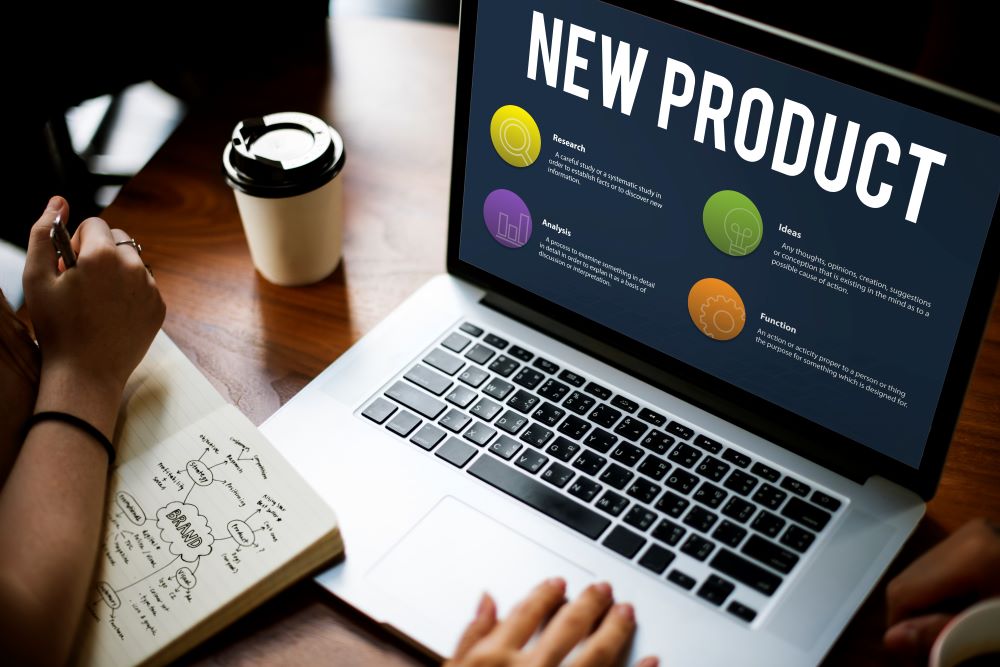The meaning, purpose and role of MVP and MMF
The terms MVP and MMF are often used in the context of product development projects. But what do Minimum Viable Product (MVP) and Minimum Marketable Function (MMF) mean in practice? What are their objectives, advantages and differences? In our article we will now explore this.

The meaning of MVP: what does it mean in agile methodology?
MVP stands for Minimum Viable Product.
The smallest product or service with functionality for which we can get feedback from potential users is not necessarily marketable. In many cases, the MVP is just a simple prototype to help gather the necessary information or to raise key risks in agile development projects.

The aim of the Minimum Viable Product (MVP)
Now let's look at why the MVP is needed!
The MVP aims to:
- Gather as much knowledge as possible from potential users with the least effort, for example, what prospective customers and users in your target market like and what they don't.
- To get the product to market as quickly as possible.
- The team should be able to test an idea with real users before committing a large budget to the full development of the product or service.
- It allows you to validate your product idea without developing the whole product.
- It can help minimise the time and resources that the team would otherwise spend on building a product that will not be successful.
How do we define the Minimum Viable Product (MVP)?
Now let's look at how to design the MVP?
1. Make sure that the planned MVP is in line with the business objectives
The first step in MVP development is to make sure that the product fits the strategic objectives.
You should consider, for example:
- What revenue figures are we aiming for?
- How many resources are available?
- Is it time to develop a new MVP?
- What is the purpose of the MVP? (e.g. to attract new users to the market)
If the MVP's objectives are in line with the business objectives, it is strategically viable.
2. Identify the target audience's problems and what solutions are offered
Once we have made sure that the MVP plans are in line with the business vision, we need to think about the specific solutions we want to provide to the users with the product or service.
They do not represent the overall vision of the product, but only parts of it. It should always be borne in mind that the MVP's primary purpose is to gather information.
You need to decide on a strategic basis what limited features to include in the MVP.
These decisions can be based on several factors, including:
- For user research
- For competitive intelligence
- How quickly can we iterate certain types of features when we get user feedback?
- The relative costs of implementing different user stories
3. Preparation of a Development Action Plan
Once the strategic element has been considered and functionality has been defined, a concrete action plan for its development needs to be drawn up.
It is important that the MVP, as the name suggests, is viable, i.e. usable by the target audience, and provides a quality user experience.

MVP in practice
A good example of an MVP might be an advertising campaign for a product that does not yet exist, which directs potential customers to landing pages or landing pages containing information about the product. The metrics track users' interest in the product and which features receive the most attention. They can help validate hypotheses.
And now, let's look at some successful MVPs!
Airbnb
Lacking the money to build a business, the founders of Airbnb used their own apartment to validate their idea and create a marketplace for short-term rentals online. They created a minimalist website, uploaded some photos and other information about their property, and almost immediately found paying guests.
Foursquare
Foursquare, a location-based social network, started as a single-function MVP that initially only offered check-ins. Then the development team started to add recommendations, city guides and other features until they validated the idea with an enthusiastic and growing user base.
What is the MMF?
MMF stands for Minimum Marketable Feature. It means the product or service with the minimum functionality that can be considered marketable. That is, it provides enough value to the user to encourage him to buy it.
The value can be:
- revenue generation
- improving competitiveness
- cost savings
- improving customer loyalty
The MMF must meet a specific need, focus on solving a specific problem. High quality and ease of use are also important.
The concept of MMF is very often used in agile marketing. It allows a company to know that although their product is not complete and will not immediately take down the market leaders, it is still key for their customers because it offers a solution to their problems.
What are the aims and benefits of the MMF?
The MMF aims to focus on the features of greatest value in the lives of potential users and to get to market as quickly as possible. This increases the return on investment (ROI) for the organisation.
Now let's see the main benefits of MMF!
- It focuses on a single function instead of a huge product, which significantly reduces time to market.
- MMF guarantees that products are made and updated with features that are truly useful and usable for users, without any unnecessary extras.
- Identifying MMFs is the best way to plan future spending.
- MMFs can be ranked by companies, allowing organisations to earn money by releasing a version of the product with an MMF, analysing the experience and using this to develop the next feature.
- Larger features can be divided into smaller user stories.
MMF in practice
The MMF concept is commonly used in mobile phone operating systems. The phone works with the basic features right out of the box, but the user receives incremental updates from the software provider that build on the existing system. In theory, each update should improve on the previous version and add a new feature that provides better functionality.
This benefits companies because it can reduce the overhead costs of designing and releasing a huge product in which most of the features later turn out not to be used at all or only rarely by users.
In summary: What is the difference between MVP and MMF?
Basically, MMF is about providing value to customers, while MVP is about providing as much information as possible about the final product.
MVP helps the team develop MMF, which is now a real feature and provides tangible value to customers. It satisfies a specific need, solves a specific problem, is high quality, easy to use and highly marketable.
Agile trends are gaining ground in projects and in the life of organisations. Develop your practical toolbox and gain international qualifications! Deepen your knowledge in our agile training courses!

 Designabc
Designabc